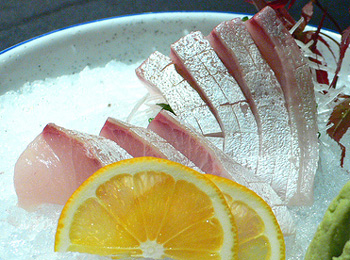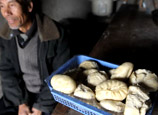
 |
| (File photo) |
The gastronomic world has come to embrace sushi and sashimi. Go to any gourmet capital in the world today and you're sure to find sushi stands, bars and restaurants that serve a variety of sushi, sashimi and other Japanese delicacies. The explosive global popularity of sushi and sashimi is a relatively recent phenomenon.
The most common ingredients in classic Japanese sushi are white rice and raw fish often wrapped in seaweed.
A dipping sauce comprising soy sauce and wasabi is also commonly served with sushi.
The best wines to serve with classic sushi are fresh and lively white wines that emphasize the freshness of the fish while offsetting the saltiness of the seaweed and soy sauce.
Sashimi is also perfect with these wines. My choices would include Spanish Albarino, young unoaked Sancerre or French Muscadet white wines because of their light and bracing qualities.
The only real challenges these lighter whites encounter is the wasabi. Often mistakenly referred to as Japanese horseradish, wasabi is actually a perennial herb native only to Japan and Eastern Siberia. The spicy, numbing and nasal clearing effect of wasabi can overwhelm lighter whites, so if you're a liberal user of wasabi choose a more powerful and extroverted white wine. I recommend Sauvignon Blanc white wines from Marlborough in New Zealand since they are not easily overpowered by strong flavor sensations. Good Marlborough Sauvignon Blanc producers include Villa Maria, Kim Crawford and Spy Valley.
The foreign-influenced croquettes and tempura have become a national passion in Japan. Croquettes fillings are usually mild creamy cheese or potato mixtures that can be quite dense. Here a white wine with body is called for, such as a Napa Valley Chardonnay or Pouilly-Fuisse from southern Burgundy. Both whites feature ample fruitiness with weighty mouth-feels to mirror the weight of the croquettes while also having enough acidity to refresh the palate. For meat-filled croquettes, try a fresh Beaujolais Villages red or young Burgundy Pinot Noir.


















 Going back home: A standing journey
Going back home: A standing journey


![]()
